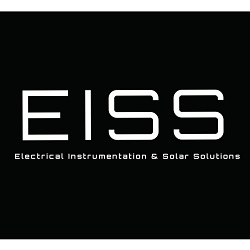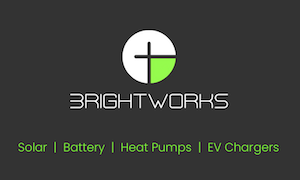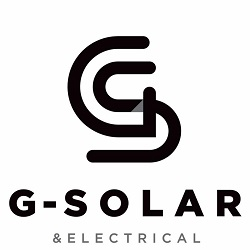

Finn's Fronius EV Chargers Review & Verdict
Finn Peacock has been a Chartered Electrical Engineer since 1998, and is ex-CSIRO
Amazing Fronius quality, OCPP and easy integration into the Fronius ecosystem make a Fronius Wattpilot EV charger a no-brainer for those with a Fronius inverter. If you don't have a Fronius inverter then they are a bit overkill.
Fronius EV Chargers: Pros & Cons
- There is a portable model you can take with you
- Great integration with Fronius inverters
- Great customer support from Fronius
- Top quality
- Able to solar smart charge with a Fronius inverter & meter
- Costs a few bucks
About Fronius
The Wattpilot EV charger is produced by Fronius. An Austrian company well known in Australia for producing high quality solar inverters. The Wattpilot is their EV charger and comes in three versions. One of them – the Wattpilot Go – is portable and can potentially be used to charge an EV anywhere there's a suitable socket.
The Wattpilot is smart and able to charge EVs solely with surplus power from a rooftop solar system, provided the home has a compatible Fronius inverter and smart meter.
The Wattpilot is likely to suit anyone who wants a smart charger and has or intends to get a Fronius solar inverter. The Go version is also one of the few portable EV chargers on the Australian market. The Wattpilot's drawbacks are its not cheap and – despite coming from a manufacturer with a reputation for making reliable products – it only has a two year warranty.
The Wattpilot's features are briefly outlined below, but if you want more information you can check out these links:
- The Fronius Wattpilot webpage
- An overview of the Wattpilot
- An installer's take
- Information on the Wattpilot's 2 year warranty
Three versions
The Wattpilot comes in three different versions:
- Wattpilot Home 11 J
- Wattpilot Home 22 J
- Wattpilot Go 22 J AUS
The two Home versions are hardwired and so have to stay at home. Because the Wattpilot Go can be unplugged it can go with you anywhere you like.
All Wattpilots can be used with either single-phase or three-phase power, but the Wattpilot Home 11 J will be limited in how much power it can provide if installed on a property with single-phase power.
Wattpilot Home 11 J: The amount of charging power the Home 11 J can provide depends on whether it's connected to single or 3 phase power.
- Single phase: 3.7kW
- 3 phase: 11kW
Most EVs can only accept 11kW or less from a home charger, so the limit on 3-phase power won't usually be a problem. But the 3.7kW limit with single phase power is low, so my advice to most people with single-phase power is to not get the Wattpilot Home 11 J.
It has the advantage of being around $100+ cheaper than the other Wattpilots. It can also be connected to lighter duty electrical cable with only a 2.5mm cross-section, but for single-phase properties I recommend upgrading the wiring if necessary and getting a Wattpilot Home 22 J.
Wattpilot Home 22 J: This Wattpilot can provide considerably more power.
- Single phase: 7.4kW
- 3 phase: 22kW – provided the EV can accept it
While EVs that can accept over 11kW from a home charger are rare, you may still like having the option of being able to charge at a higher rate.
Wattpilot Go 22 J AUS: This can provide the same power as the Home 22 J:
- Single phase: 7.4kW
- 3 phase: 22kW – provided the EV can accept it
The Wattpilot Go has a 3 phase 32 amp plug. A small number of households and a larger number of businesses have suitable sockets for it. Even if your home has 3 phase power you are likely to need to have a conveniently located socket installed. To use the Wattpilot Go with single-phase power you will need a 32 amp, 3 pin, socket outlet. You will also need to provide your own adaptor cable to use it.
Smart Charging
When used in combination with a compatible Fronius solar inverter and smart meter, the Wattpilot allows an EV to be charged with surplus solar power that would otherwise be sent into the grid for a feed-in tariff. As solar feed-in tariffs are often low this is normally the cheapest way to charge an EV. The minimum amount of surplus solar it can provide to an EV is 1.38kW. Provided your solar system isn't small it will usually produce more than this when the sun is shining.
The Wattpilot Go's portability may make it seem like a good deal for renters, but rental properties with a compatible Fronius inverter and smart meter are rare.
ID Chip
Wattpilots come with one plastic fob that contains an ID chip. If desired, this can allow only the person with the fob to use it. Extra fobs can be ordered and up to 10 used with one Wattpilot.
No Cable
Wattpilots don't come with a charging cable to plug into EVs so you'll have to supply your own – either single phase or three phase as appropriate.
Price
As I write this in December 2024, Fronius Wattpilots are selling for around $1,800. You will also need a charging cable, which can cost a couple hundred dollars. Installation will also add to the cost. While a straight forward installation may only cost a few hundred dollars, it can cost $800 to $1,000 or even more.
If you get a Wattpilot Go, then installation will normally involve having an appropriate socket install where you park your car. Despending on how much work is involved, this can also be rather expensive.
To maximize your consumer protection, I recommend buying a Wattpilot from the company that installs it. This makes them responsible for both the installation and the operation of the device and they are obligated to provide support if there is a problem. If you instead buy the Wattpilot and then pay someone to install it, if there is a problem, Fronius may blame the installer and the installer may say the problem is with the product. Even though the Wattpilot Go is portable, making this is less of an issue, I still suggest buying it from whoever installs the socket it will use.
Short Warranty
Fronius has a reputation for making reliable electronics, so I would expect – or at least hope – that a Wattpilot would last for many years. Unfortunately, the Wattpilot only comes with a 2 year warranty. I consider this insufficient given how much it costs. Fortunately, you are protected by Australian Consumer Guarantees and I suggest using them if your Wattpilot fails within a few years of its warranty ending.
Installer Approved
Since 2023, we've been running the SolarQuotes Installers' Choice EV Charger Awards. In its first two years, Fronius won in the following categories:
- 2023: 1st place Money's No Object category, 1st place Every Dollar Counts category, and 1st place Best After Sales Support.
- 2024: 1st place in the Money's No Object category and 2nd place in Best After Sales Support.
For the 2025 awards we simplified things and simply asked installers, "If installing a system on your own house today, which brand's EV charger would you use?" Fronius took 1st place, followed by Tesla and then Sigenergy.
While the Fronius EV charger isn't cheap, their quality clearly appeals to Australian installers.
Fronius has 1 EV charger in our database
Filter by:
Fronius Reviews (64)
Show Most Relevant reviews from All time
- 5 star 40
- 4 star 19
- 3 star 3
- 2 star 0
- 1 star 2
View Timeline
23 January 2025
12 November 2024
An incentive was offered by Green Sky Solar for this review. Learn more here.
Saving money (?)
02 October 2024
An incentive was offered by Chief Electricians Pty Ltd for this review. Learn more here.
10 April 2025
11 September 2024
An incentive was offered by Expert Electrical for this review. Learn more here.
29 August 2024
An incentive was offered by AG Solar Pty Ltd for this review. Learn more here.
22 June 2024
17 June 2024
10 May 2024
An incentive was offered by Expert Electrical for this review. Learn more here.
31 March 2025
26 March 2025
07 August 2024
03 August 2024
30 June 2024
28 June 2024
15 June 2024
06 June 2024
29 May 2024
09 May 2024
20 April 2024
29 March 2024
18 February 2024
20 December 2023
19 December 2023
- never charge above 80% (controlled by the car)
- take any excess solar (>1.4kW) if needed
- never charge between 3pm and 9pm (peak rates)
- ensure car has min 100km (20kWh) in the tank by 6am
So if there's lots of solar around it'll sit at 80% all the time, if there's absolutely no excess solar then it will only ever be as low as 20kWh – which gets me where I need on the average day. I just have to remember to let it charge higher if I have a trip planned.
I've blocked it from internet access (app still works fine on local network) and there's a Home Assistant integration so I can add more elaborate conditions and controls there if I need (e.g. I could schedule longer trips in my calendar and have HA change the minimum charge target the day before).
18 December 2023











.png)



















In hindsight, I wish I just stuck with my Tesla wall charger and utilised an application such as Charge HQ to ensure my charging only occurred from surplus EV energy.